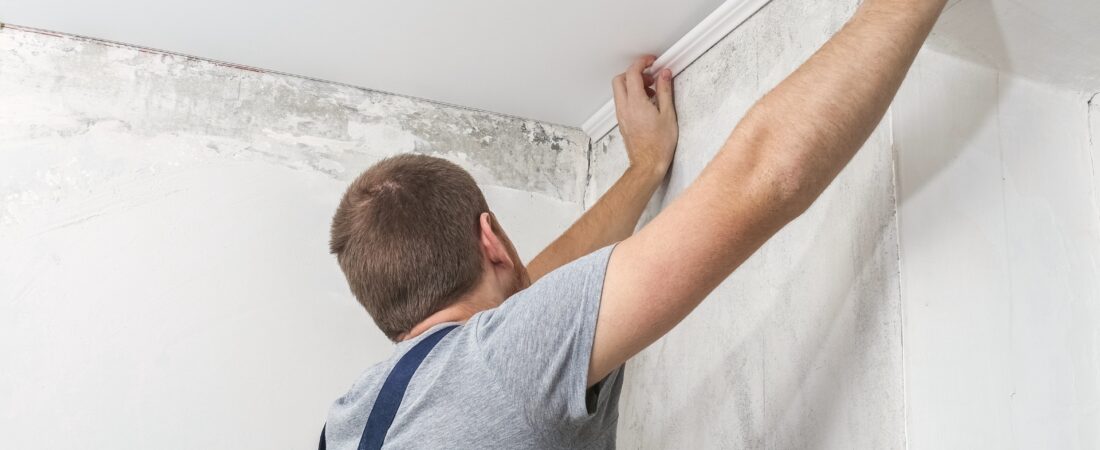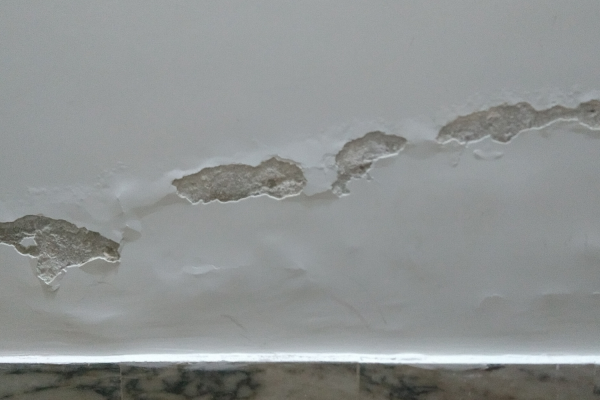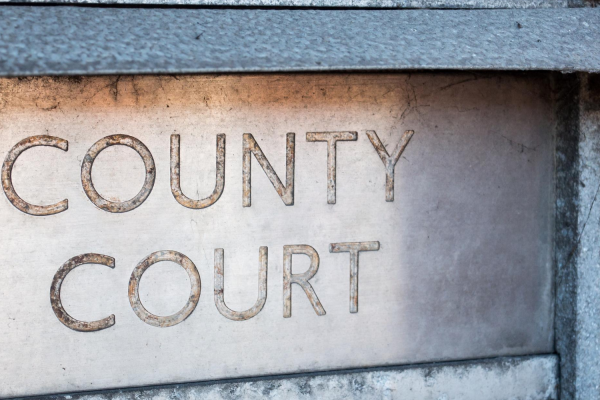Many rented homes suffer from black mould and condensation on windows, frames and walls. But what causes damp and how it can be treated?
Understanding the underlying factors, such as poor ventilation and water leaks, is essential for preventing damp, mould and condensation from occurring in your property.
Moreover, knowing how to successfully tackle these issues can help both you and your tenants maintain a healthier and more comfortable living space.
This blog post addresses frequently asked questions about the causes of damp and mould, along with effective methods to get rid of these unwelcome intruders in rental properties.
- What causes damp?
- How to get rid of condensation
- How to get rid of rising damp
- How to get rid of penetrating damp
- How to get rid of traumatic damp
- How to get rid of mould
It takes less than five minutes to set up your advert on OpenRent.
Get Started TodayWhat causes damp?
The first step to treating damp is to identify the cause of it. There are three main types of damp:
1. Condensation
Condensation is by far the most common of all damp problems and is predominantly caused by day-to-day domestic activities.
It occurs when there is a build-up of warm, moist air and the property then starts to cool down. Moisture then condenses on cold surfaces such as windows and condensation becomes apparent.
People naturally release moisture into the air via respiration and sweating. Cooking, drying clothes inside, showering and other water-releasing activities also add to the buildup of warm moisture.
If the moisture in the air is not regulated throughout the property then condensation problems can begin. In other words, normal tenant-like use of the property adds to the water in the air.
Condensation occurs primarily between autumn and winter. This is when there tends to be low levels of ventilation within the property as people close the windows and doors to keep warmth in and heating bills down.
Colder external air temperatures cause the moisture to condense faster and more noticeably. For example, colder window panes will quickly cool moisture in the air to a liquid state, leading to condensation on windows.
2. Penetrating damp
Penetrating damp occurs when moisture is built up horizontally in the walls and it’s usually a result of poor maintenance of the property.
This problem can occur if you have what is known as an ‘external defect’ – for example, blocked guttering.
When water fails to evaporate and accumulates, surpassing the guttering’s capacity, it eventually passes through to the building’s surface.
You might also be interested in…
- What the New Decent Homes Standard Means for the Private Rented Sector
- Tenant Fees Act 2019: Banned Tenant Fees and Payments for Landlords
- Has the Renters Reform Bill 2024 Been Passed?
- How to Be a Live-In Landlord: Rules, Rights and Managing Lodgers
- What is Rent Arrears? Tips to Protect Your Rental Income as a Landlord
3. Rising damp
Rising damp is often misdiagnosed and confused with penetrating damp. It’s the movement of moisture, rising up through the outer walls of the building.
It’s most commonly found in older properties where there is either no damp proof course in place or the physical one has failed. For example, in raised ground levels which have breached the height of the damp proof course.
Having no damp proof course means that the moisture won’t be stopped from rising up the wall through capillary action.
Rising damp will only reach a height of around one metre. The groundwater will contain salts which will then be deposited on the interior and exterior walls of the building.
4. Traumatic damp
Traumatic damp can be caused by leaking water from waste and heating pipes, overflowing baths or sinks, burst pipes or defective water storage vessels inside the building.
This type of damp can also originate from outside the property, for example, from another building or from environmental flooding.
When you sign up for Rent Now up front, you get our Ultimate Advertising package for free.
Explore Rent NowHow to get rid of condensation
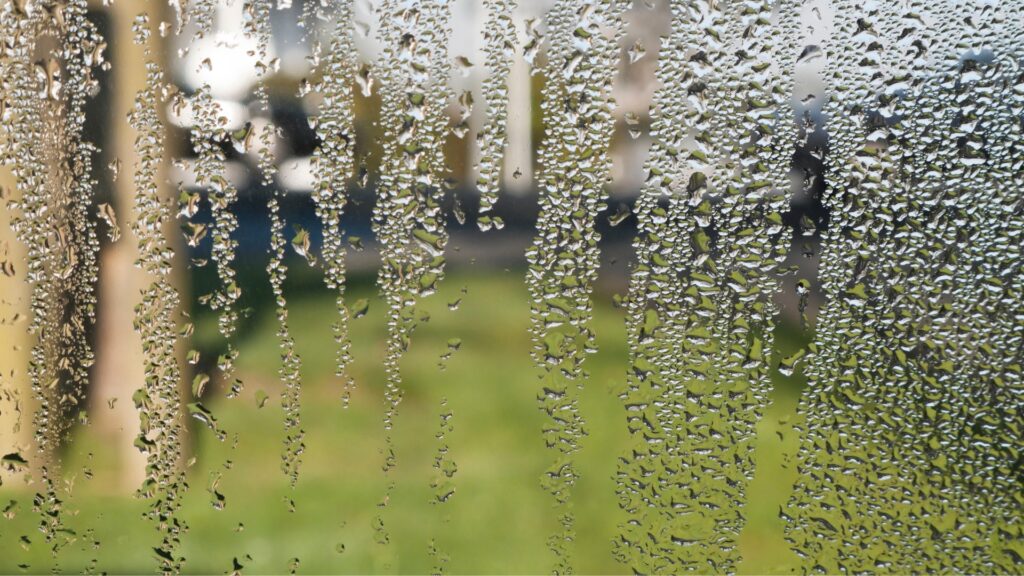
If diagnosed early, condensation is a simple problem to treat. The main form of treatment is the improvement of ventilation throughout the property.
This can be achieved through simple lifestyle changes, such as opening windows for at least 10 minutes daily, drying clothes outside or installing a tumble dryer.
Landlords should also consider adding ventilation fans to their property which will allow for the air to exit the property as soon as possible.
If mould is occurring in your home you can buy mould kits which will get rid of it in the short term.
The most effective method of treating condensation is by improving the airflow into and out of the property. This can be achieved with extractor fans and openable windows.
To learn more about your obligations in addressing damp, mould, and condensation, whether you are a tenant or a landlord, check out our blog post available here.
How to get rid of rising damp
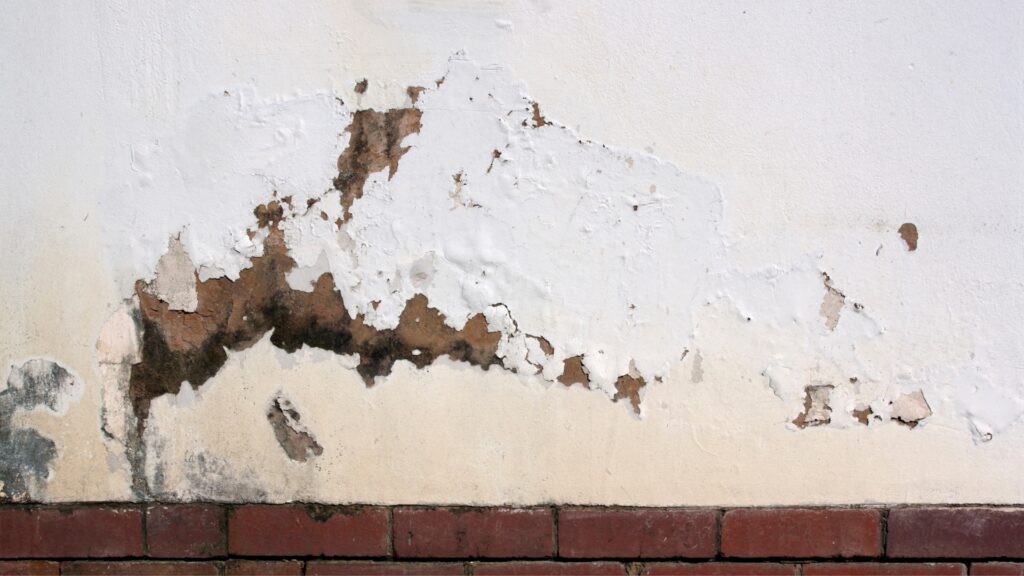
To fully treat rising damp, you must locate the source of moisture. A quick fix may stop the issue in the short term but can make repairs more expensive in the future.
There are damp-proofing solutions that can be used to prevent rising damp damaging your property. A damp proof course is the most common form of treatment, with most modern housing already having this in place.
Older housing, usually pre-1950s, may not have a damp proof course installed. If there’s a damp proof course installed it should be checked to ensure it’s undamaged and functioning correctly.
Another form of treatment for rising damp is an electro-osmosis system. The process of electro-osmosis damp proofing is that a series of holes are drilled on the outside of the wall just above ground level.
Anodes are then inserted into the drilled holes and these are linked by a connecting wire which is pointed into the wall. A small and safe electrical current is then sent through the anodes and connecting wire.
The electrical charge acts to repel the moisture rising up the wall safely back down to the ground. A constant small electrical charge is maintained to ensure the property remains damp-free.
How to get rid of penetrating damp
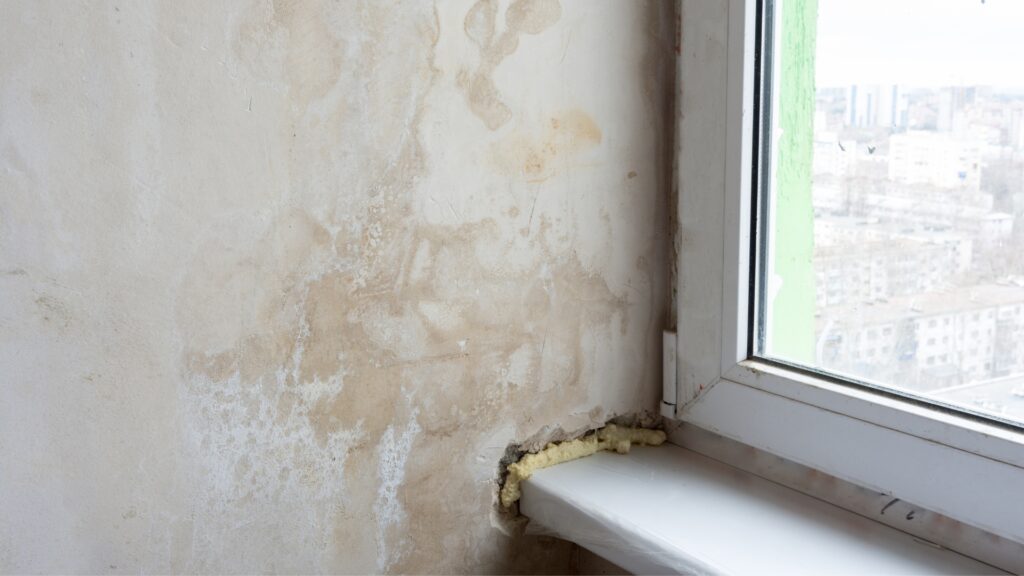
For treating penetrating damp, similar to treating rising damp, the most important step of the process is figuring out where the moisture originates from.
If damp is entering the property through broken rainwater gutters or pipes, then the simple way of treating the problem is by fixing the fault.
Air gaps in windows and doors can lead to penetrating damp. Filling in the gaps can help solve the problem.
Make sure to schedule your annual gas safety inspection before winter rolls in.
Order Gas Safety CertificateCavity walls can provide efficient protection against penetrating damp. Most modern housing is constructed with two layers of wall with a cavity placed within them. Cavity walls act as a barrier so the moisture evaporates before it can penetrate its way through the property.
It’s important to note that cavity walls can also cause damp as a result of it becoming full of debris. In this case, the moisture can pass via the debris from the outer wall to the inner wall of the property.
How to get rid of traumatic damp
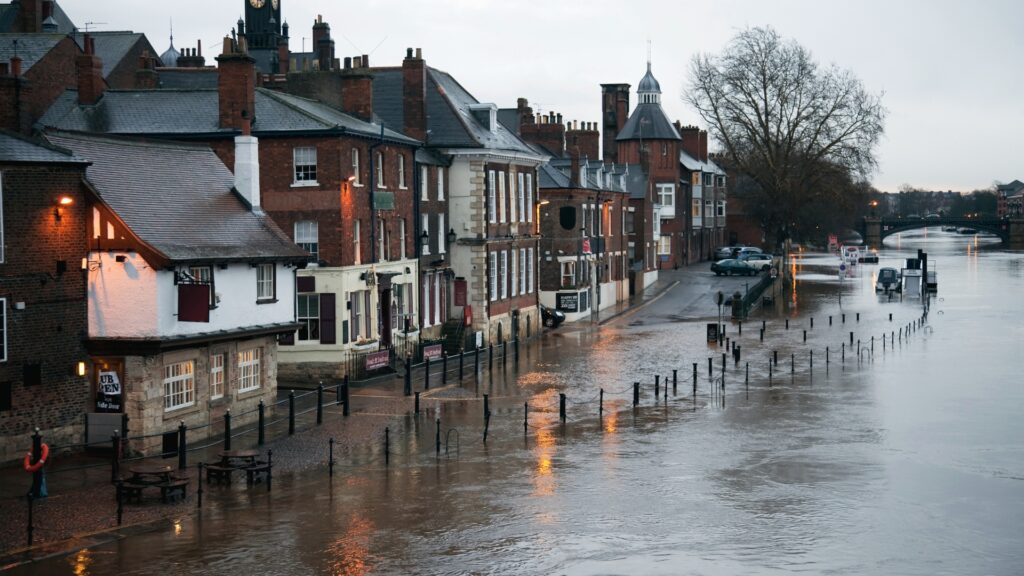
As a landlord, it is crucial to promptly address and effectively eliminate traumatic damp within your property to ensure the well-being of your tenants and maintain the structural integrity of the building.
The first step is to identify the source of the damp, whether it stems from internal issues such as leaking pipes, or external factors like environmental flooding (e.g., when a nearby river or stream overflows during a period of heavy rainfall).
Engaging the services of a professional inspector or a qualified contractor can help pinpoint the exact cause and classify the damp as ‘traumatic’.
Once identified, it’s essential to undertake necessary repairs or replacements, such as fixing leaking pipes, reinforcing insulation, or improving the building’s drainage system.
Implementing regular maintenance checks and investing in appropriate waterproofing measures can significantly reduce the likelihood of future damp-related issues.
How to get rid of mould
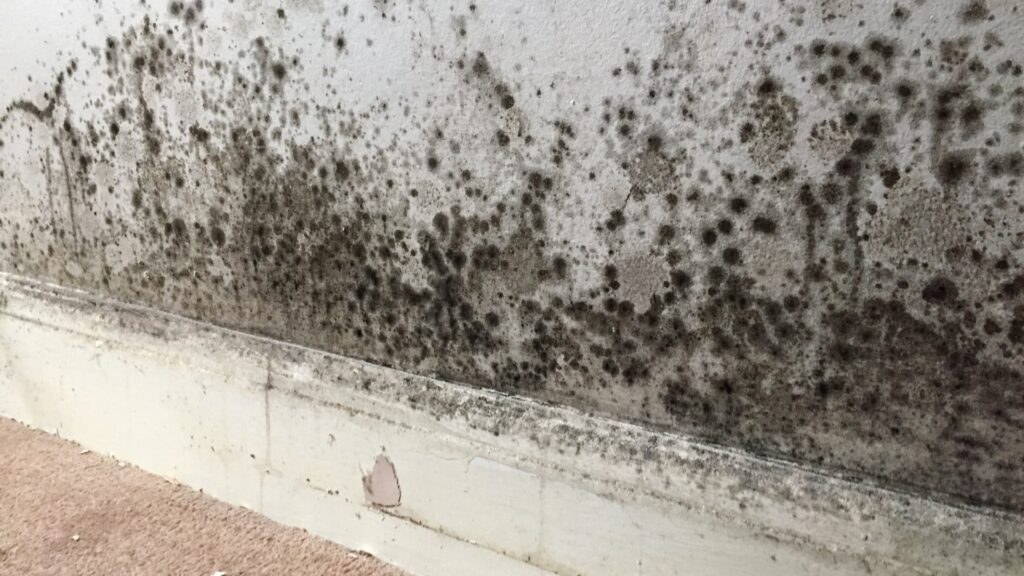
For common types of mould, start by identifying and fixing the root cause, which could be leaks or poor ventilation. Once that’s sorted, you can clean affected surfaces with a water and detergent solution.
When it comes to severe cases of black mould, it’s a wise move to let the experts handle it, as disturbing it can release potentially harmful spores into your property.
However, for less severe mould problems, there are several options available. You can opt for store-bought bleach-based products, but be cautious of the strong fumes and ensure proper ventilation.
Alternatively, for an eco-friendly approach, consider using white vinegar at full strength or diluted for smaller patches. Another non-toxic alternative is a mixture of tea tree oil and water.
Regardless of the mould type, maintaining consistent moisture control and ventilation is essential for long-term prevention.
Moreover, frequent inspections and prompt action, when signs of mould emerge, can save both you and your tenants from the hassle and potential health risks associated with mould infestations.
This blog post was fist published in 2020 and contains contributions from Robert Owen from specialist property care company Timberwise. You can find additional guidance on issues related to damp or property care at timberwise.co.uk.
